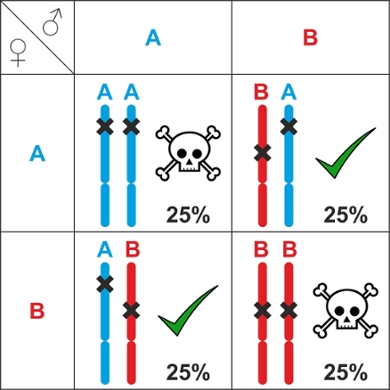Research project
Balanced lethal systems
How do balanced lethal systems originate and persist in nature?
- Contact
- Ben Wielstra
- Funding
-
 ERC Starting Grant
ERC Starting Grant
-
 NWO promotiebeurs voor leraren
NWO promotiebeurs voor leraren
-
 NWO ENW-M-1
NWO ENW-M-1
- Partners
- Naturalis Biodiversity Center
- University of Belgrade, Serbia
- Jagiellonian University, Kraków, Poland

Ben Wielstra and his team explore the role of genome rearrangements in the evolution of balanced lethal systems. In a balanced lethal system, two chromosome forms carry distinct lethal alleles that are reciprocally compensated for by functional genes on the alternate form. In effect, both are required for survival. Yet, parents randomly pass these forms on to the next generation. Under Mendelian inheritance, exactly 50% of the offspring receive two copies of the same chromosome form and are therefore not viable. Balanced lethal systems appear to defy evolutionary theory: such incredibly high mortality should quickly be eliminated by natural selection. Wielstra leads a genomic study of the best-known case of a balanced lethal system (chromosome 1 syndrome in Triturus newts), combined with theoretical modelling, to understand balanced lethal system evolution.

Publications
- Wielstra, B. (2020). Balanced lethal systems. Current Biology 30(13): R742-R743.
- Meilink, W.R.M., France, J., de Visser, M.C., Wielstra, B. (2021). Balanced lethal systems: an evolutionary mystery. Frontiers for Young Minds 9: 632945.
- Berdan, E.L., Blanckaert, A., Butlin, R.K., Flatt, T., Slotte, T., Wielstra, B. (2022). Mutation accumulation opposes polymorphism: supergenes and the curious case of balanced lethals. Philosophical Transactions of the Royal Society B 377(1856): 20210199.
